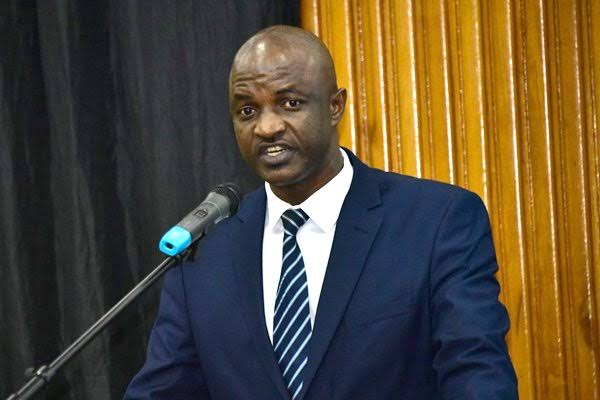The Secretary to the Treasury, Ramathan Ggoobi, has reassured the public that despite the reported public debt reaching Shs97 trillion, the country remains financially sustainable and capable of securing additional loans.
Ggoobi emphasized Uganda’s active participation in the international credit market, distinguishing it from other African nations facing credit restrictions. He said that the government’s confidence in its strategy to address risks and challenges associated with the debt, emphasizing the sound macro-economic management in place.
“The debt is sustainable. Uganda is fully participating in international credit markets where many countries in Africa struggle to gain access and cannot be allowed to borrow,” stated Ggoobi. He acknowledged existing risks and challenges but emphasized ongoing discussions and a comprehensive strategy to navigate them.
The mounting debt concerns have prompted Members of Parliament on the Budget Committee to scrutinize the Ministry of Finance, Planning, and Economic Development’s approach to managing the situation.
According to State Minister for Finance, Hon. Henry Musasizi, Uganda’s total debt stock reached US$23.7 billion as of June 2023, compared to US$21 billion in December 2022.
Musasizi, presenting the National Budget Framework Paper for the financial years 2024/2025 – 2028/2029, assured that despite the increasing debt, the government is efficiently allocating resources and limiting borrowing to critical areas.
Minister Musasizi disclosed plans to allocate Shs200 billion in the Financial Year 2024/2025 to address part of the Shs2.7 trillion domestic arrears registered as of June 2023.
However, documents submitted by the Ministry of Finance to Parliament’s Budget Committee revealed a significant drop in donor support, decreasing from Shs2.781 trillion in 2023/24 to a mere Shs28.94 billion in the upcoming budget of 2024/25.
This decline raises concerns about the potential impact on development projects, budgetary constraints, and the need for strategic financial management amid reduced external support.




